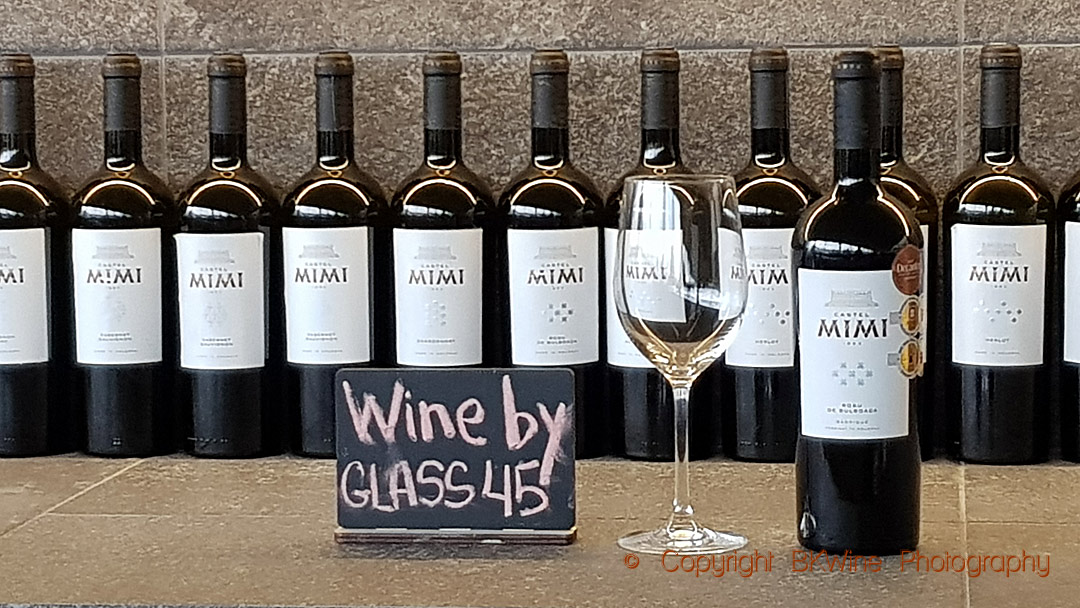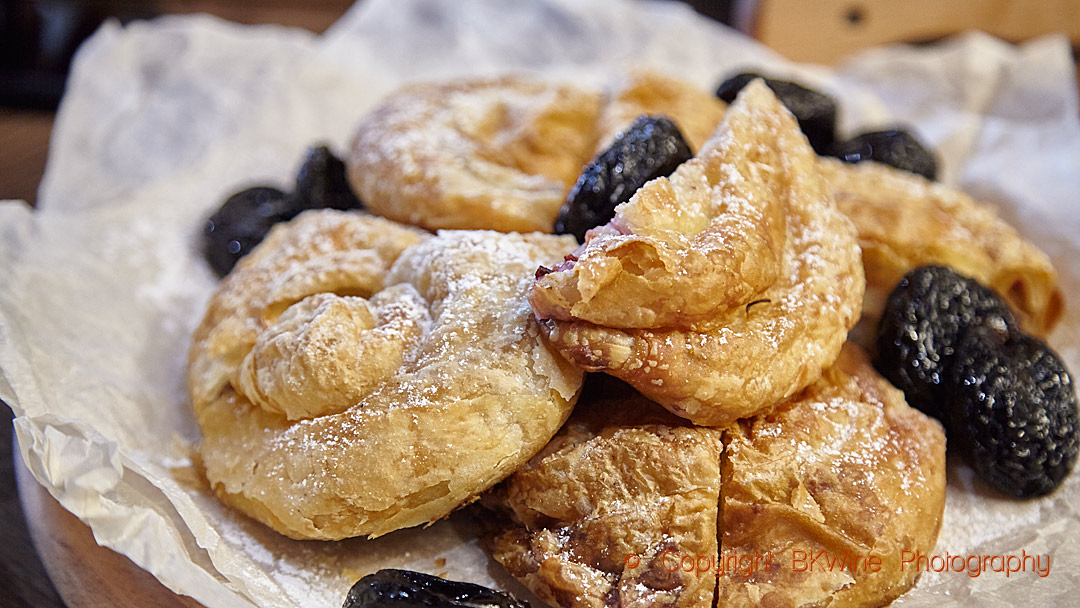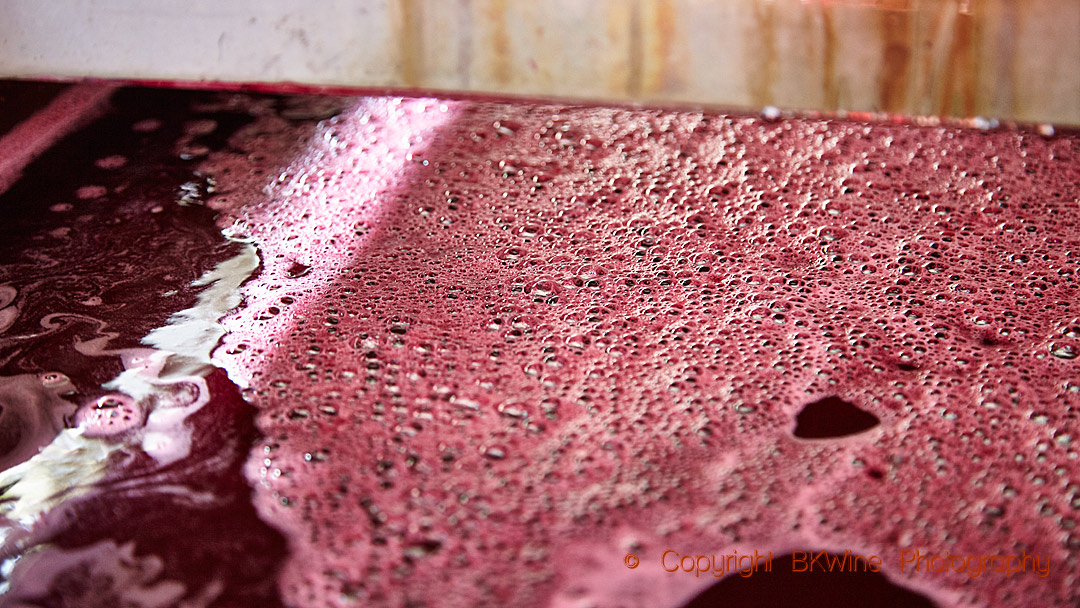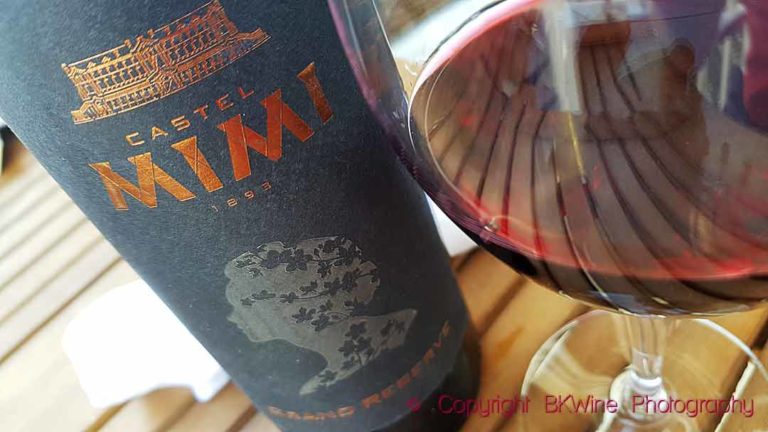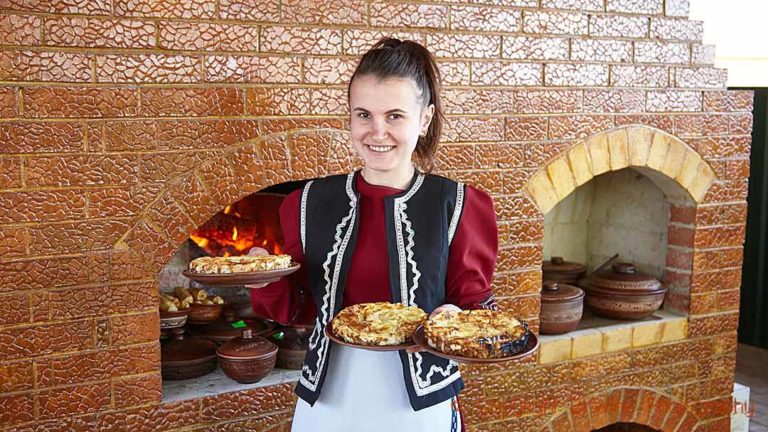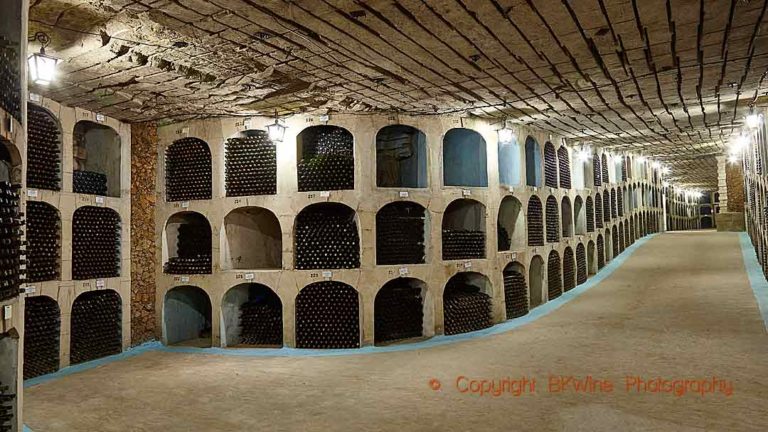Moldova, the small wine country squeezed in between Romania and Ukraine, are making big efforts to make their wines more well known. Having been hampered in its dealings with the outside world during the Soviet years, it is now making up for lost time. Two of the biggest estates in the country, Purcari and Castel Mimi, both with a pre-Soviet history, are leading the way.
Château Purcari and Castel Mimi are both beautiful wine estates with a fascinating past going back to the 19th century.
At that time, wine had been made for a long time in Moldova. The country was part of the Ottoman Empire from the early 16th century but wine continued to be produced, albeit in less quantity.
This is an article in our series on wines from Moldova:
- Moldova, an exciting “new” wine country with a long history | Britt on Forbes
- Moldovan wine classics in modern versions: Chateau Purcari and Castel Mimi
- Wine in Moldova: Château Vartely and Asconi Winery, two strong newcomers after independence
- Moldova’s emerging small, high-quality wine producers
- Historic bottles and traditional gastronomy in Moldova’s amazing underground wine world
- Wine tourism at Vinuri de Comrat in Moldova, a passionate project
More articles on Moldovan wines on BKWine Magazine here.
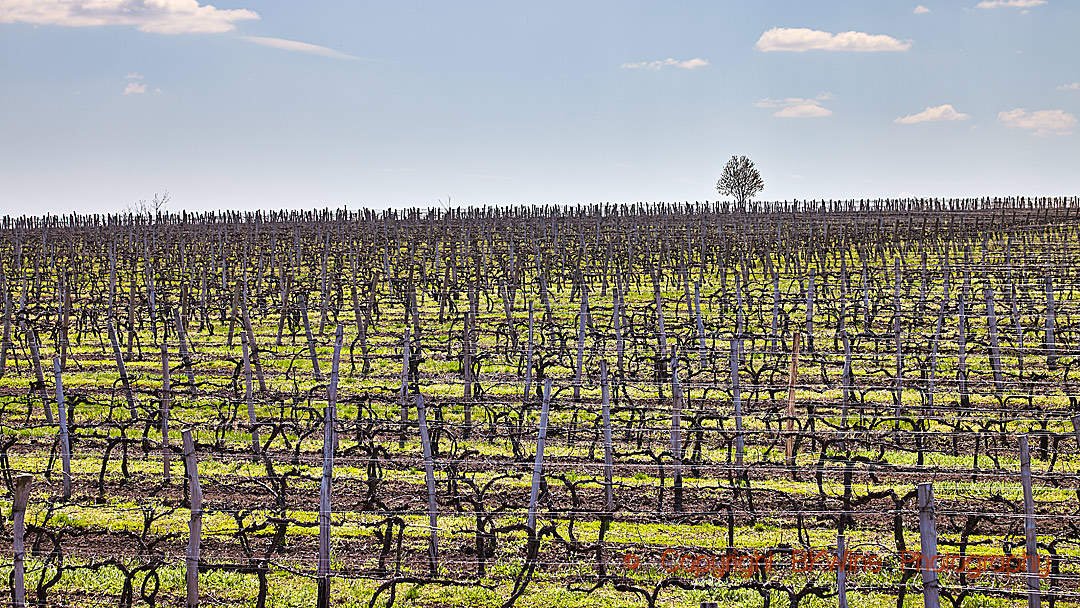
In 1812, Russia annexed Bessarabia, the eastern part of Moldova, which became a province within the Russian Empire. Wine production was now encouraged and people moved here from both neighbouring countries and from afar. Grapes and consultants arrived from France. A School of Viticulture was created during the second half of the 19th century, one of the very first such schools in Europe.
Purcari was founded in 1827 and their red flagship Negru de Purcari won a gold medal at the Paris World Exposition in 1878. Soon the export of Moldovan wines to western Europe was in full swing. This was in part due to the fact that France and its neighbours were suffering the consequences of phylloxera, which arrived later to Moldova.
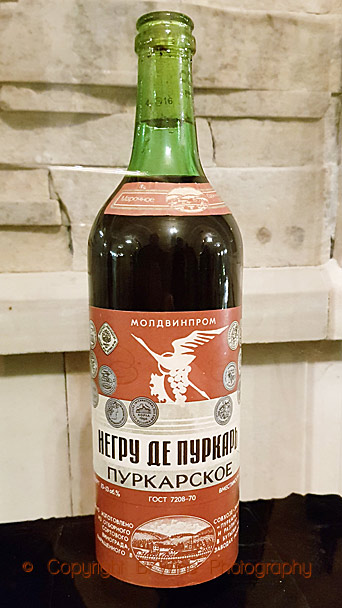
Constantin Mimi, the founder of Castel Mimi, studied viticulture in Montpellier in southern France in the late 19th century. With newfound knowledge about winemaking, he went back home to the village of Bulboaca, east of Chisinau, to create his vineyard and build his impressive chateau.
The years after the Russian revolution and the aftermath of the first world war were difficult times for the wine industry. In 1940 Purcari was turned into a sovkhoz, a state-owned farm. Castel Mimi was transformed into a “wine factory” which started to turn out immense volumes of uninteresting wines.
But rest assured, they have both risen again. Read their stories below.
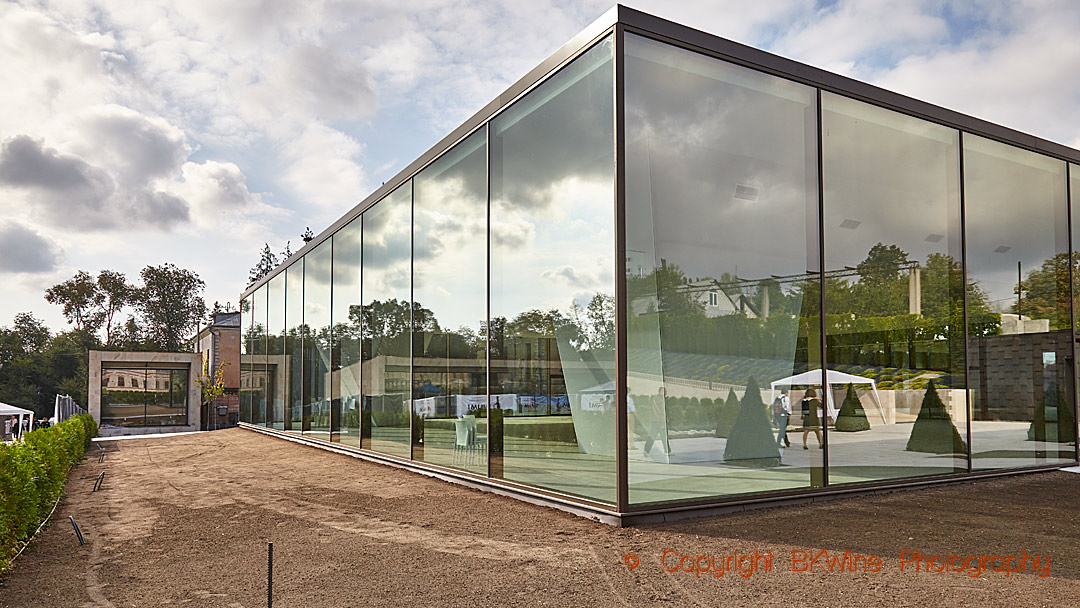
Chateau Purcari, the trailblazer
Château Purcari is a driving force in the Moldovan wine industry both by virtue of its size and history and the quality of its wines.
“The image in general of Moldovan wines”, says chief winemaker Nicolae Chiosa, “is that they sell at low prices, too low prices. At Purcari we want to keep good quality and a good price level for that quality.”
Purcari was established in 1827. The attractive chateau that we can admire today is, however, not the original one. “During Soviet times everything was destroyed. It was a disaster”, says Nicolae. “15 years ago, the winery was rebuilt, a replica of the original one.”
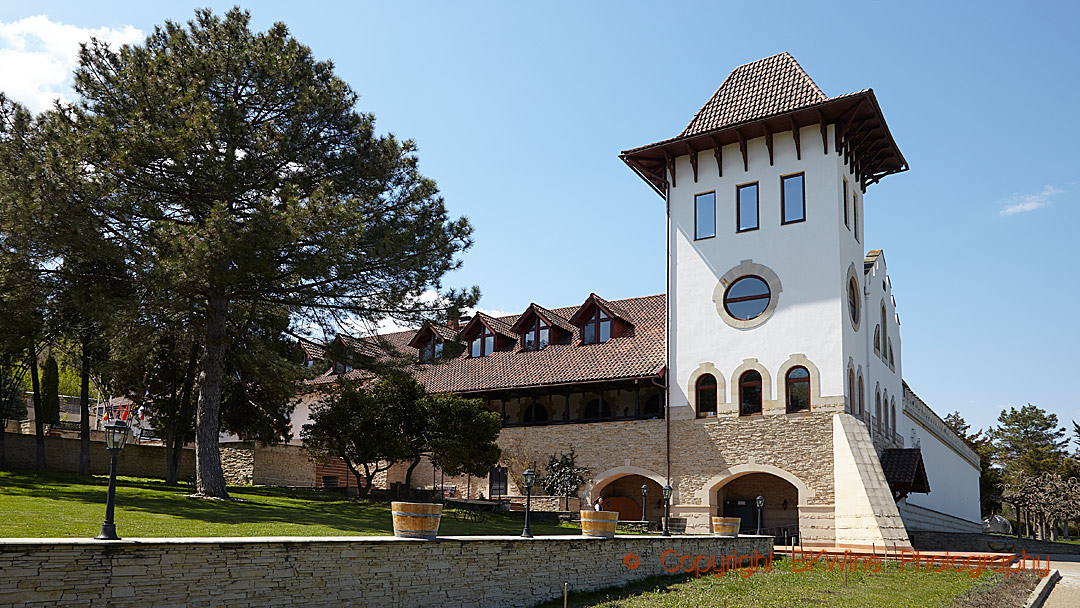
Purcari has long been known for its quality and the Soviet times did not totally destroy that reputation. For instance, the production of Negru de Purcari continued during these years and Nicolae proudly talk about the fact that Queen Elizabeth was given a bottle of this wine in 1984.
Château Purcari is in the south-eastern part of Moldova, close to the Ukrainian border. The region here is called Ștefan Vodă. Purcari belongs to a group of four other wineries, three in Moldova and one in Romania. “Purcari is the group’s premium winery”, says Nicolaie. “The head of the group, Victor Bostan, is himself an oenologist. He has worked for 35 years as winemaker in Moldova. Wine is his passion.”
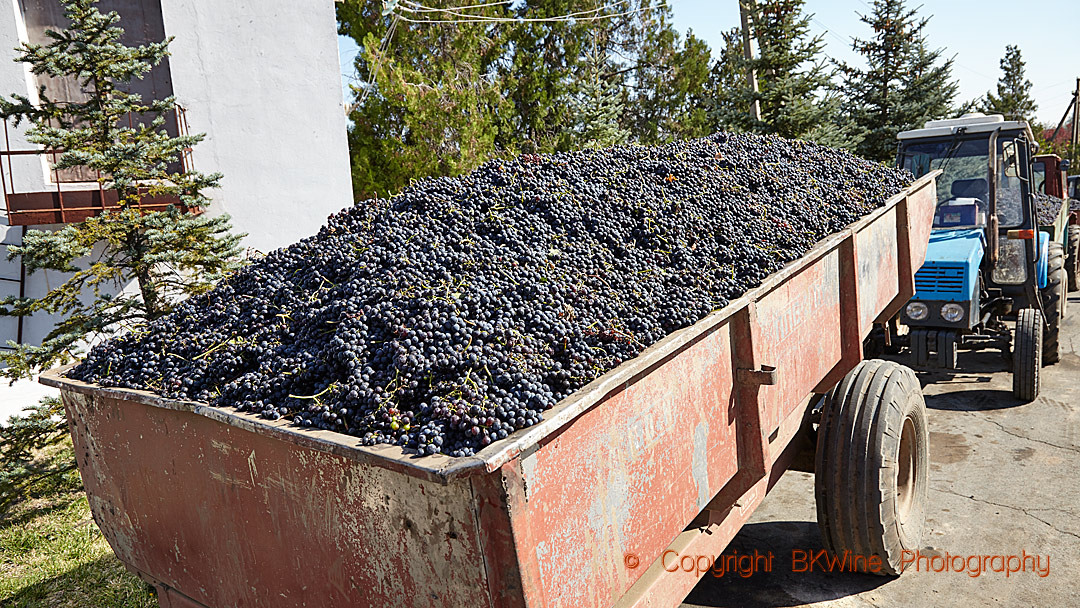
In total, the group controls 1,000 hectares of vines in Moldova. Purcari owns 360 hectares and buys grapes from an additional 150 hectares. The production at Purcari is 3 million bottles per year.
We walk with Nicolaie Chiosa to a single plot vineyard of 260 hectares, close to the winery. He points in different directions, high-lightning the different soil types and grape varieties. “We are close to the Black Sea”, he says, “only 69 km from Odesa. In the summer it can be very hot and the winds from the sea cool a little bit. And during the winter they warm up.”
“It is very interesting for us to have such a big single plot”, he continues. “It is surrounded by forest, rich in biodiversity, which protects the vineyard. We don’t use any herbicides. Because we are far away from our neighbours, we don’t have any problems with other farmers who work differently from us.”
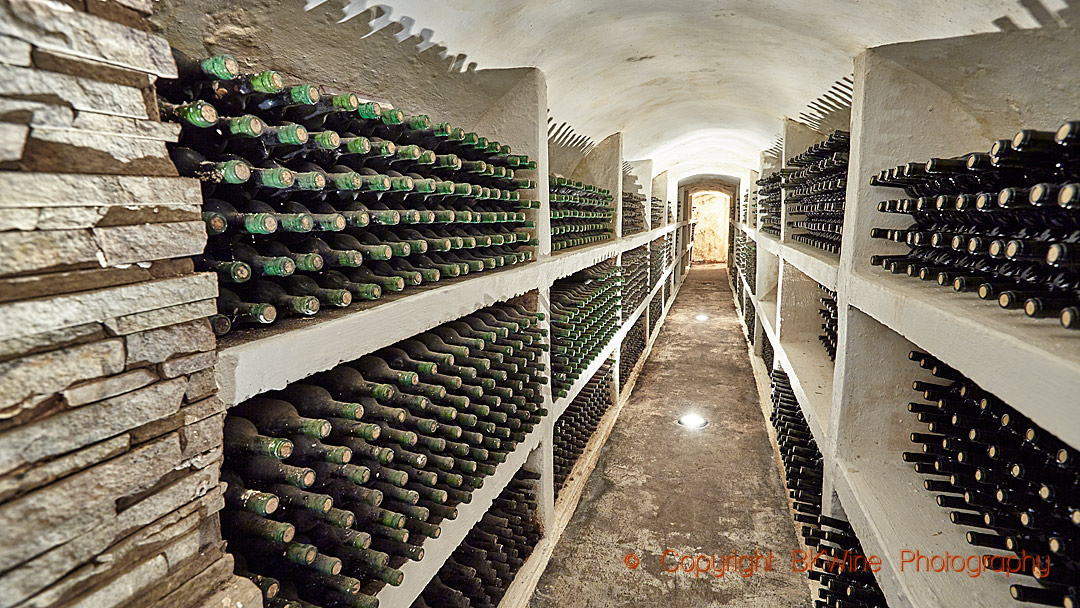
The plot was planted between 2003 and 2009 with mainly red grapes such as cabernet sauvignon, merlot, pinot noir, malbec, the Georgian grape saperavi and the local rara neagra. The white grapes, chardonnay, sauvignon blanc, pinot gris, traminer and the local feteaska alba, grow mainly in the Codru region, a bit further north.
Right now, Purcari is building a new cellar and new storage facilities. “We will double in size”, says Nicolae. “All the process will be in one place. There will be less distance for the grapes to travel, which is good for the quality.”
As he vinifies each variety differently, it is an advantage to have many tanks of different sizes. “Sometimes we do pigeage, sometimes delestage or remontage. We pick the grapes in small boxes and keep them cool in fridges for one day before processing. This increases the flavours.”
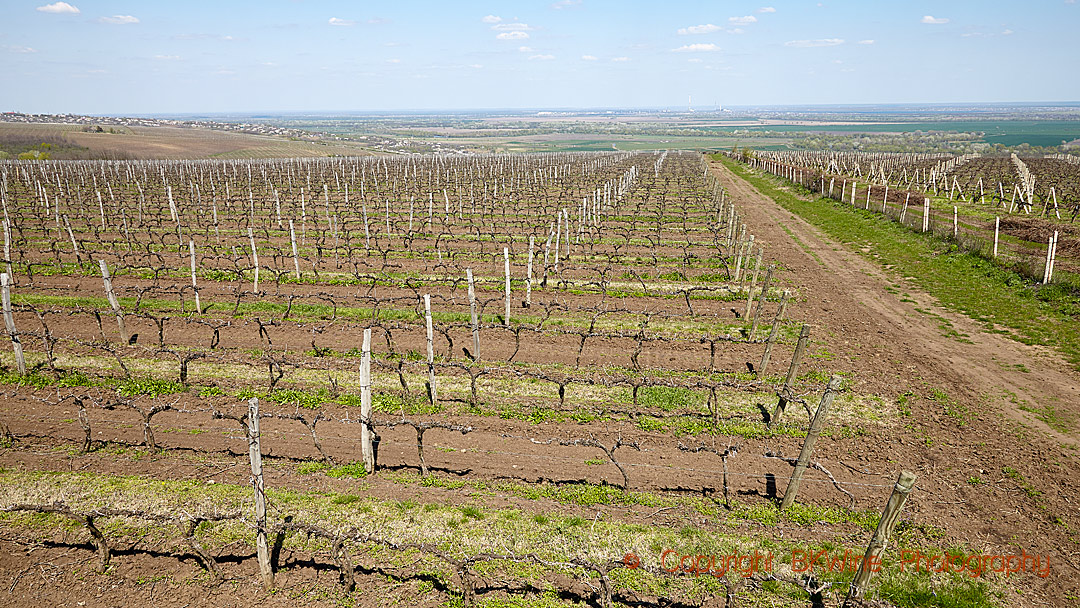
The wines are excellent. The Negru de Purcari is still their most prestigious wine, made from 70% cabernet sauvignon, 25% saperavi and 5% rara neagra. It is oak-aged for 18 months in French barrels. Negru de Purcari 2016 has a deep colour, notes of figs, some tobacco and spices. It has a good backbone and balance. It will probably age very well but drinks beautifully already.
Alb de Purcari 2017 with 50% chardonnay fermented in new barrels, 45% pinot gris and 5% pinot blanc is a stylish, classic white. Another white, Purcari Traminer 2018, is also very enjoyable with floral and perfumed notes and some elegance.
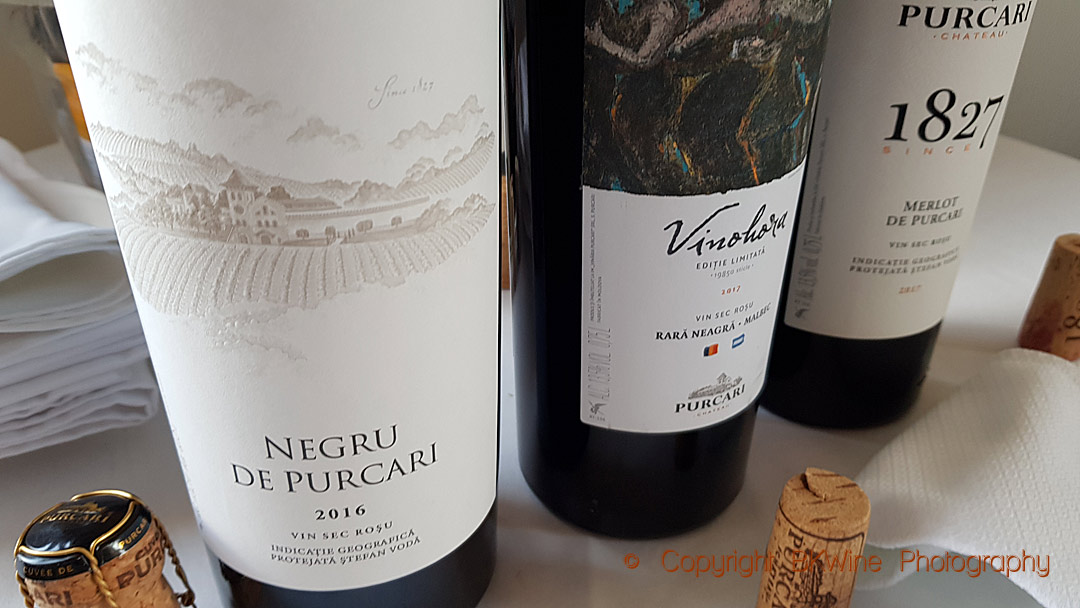
Purcari started making sparkling wines two years ago. “We were in the Top 10 at the Effervescences du Monde, a wine competition”, says Nicolae. “We produced 80,000 bottles the first year which were sold out very quickly, 200,000 the second year and in 2018 we made 300,000 bottles.” He seems proud and rightly so, the Purcari Alb Brut 2016 we tasted is delicious.
For the moment, Romania is their most important export market. Some wineries are again exporting to Russia, he says, not all though. “The future is not so much Russia, we would like to compete in other markets, but Russia is still important.”
Purcari has also invested in wine tourism. The hotel with 13 rooms is open all year round as is the high-quality restaurant. There are plans to invest more, to receive more people, maybe to open a SPA. “But it is a question of money”, says Nicolae.
“We try to be attentive to what is happing on the market. If the market is not satisfied, we can change quickly,” says Nicolae. Seems like an excellent strategy in today’s fast-paced world.
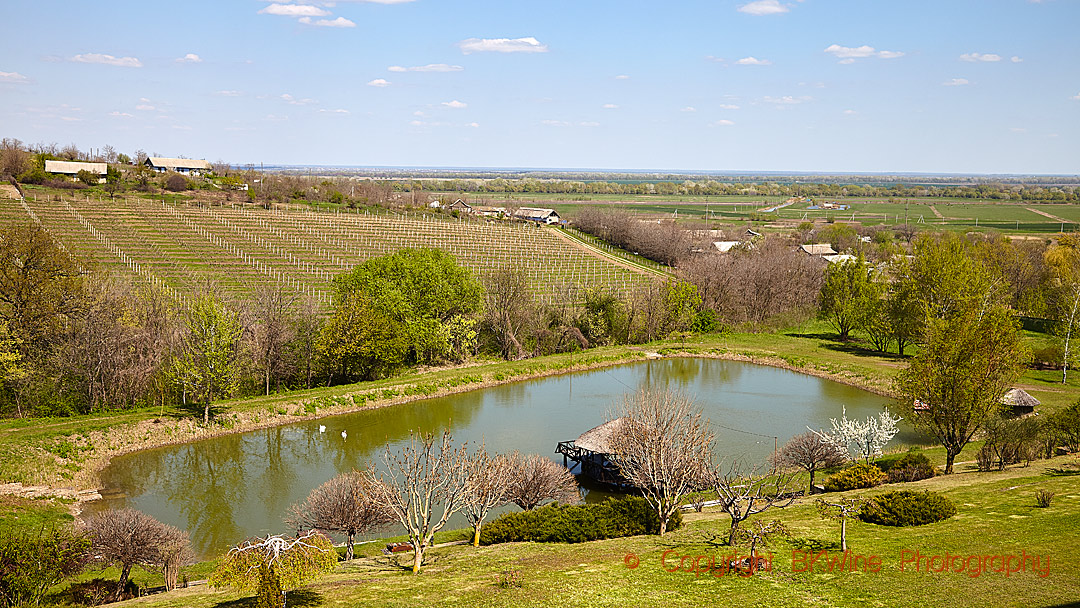
Castel Mimi, a stylish wine chateau
Constantin Mimi is an important personality in the history of Moldovan wines. It would have warmed his heart to see the chateau today, beautifully restored to its former splendour. Just as impressive as the chateau, is the work of the owner family. To restore the Castel Mimi and making it a stunning destination for both wine tourists and ordinary tourists, is no small feat.
The chateau was finished in 1901. By that time Constantin Mimi was back from France, where he had studied winemaking for two years in Montpellier. He brought the aligoté grape with him back home and this famous Burgundian variety is still very present today in the Moldovan vineyards.
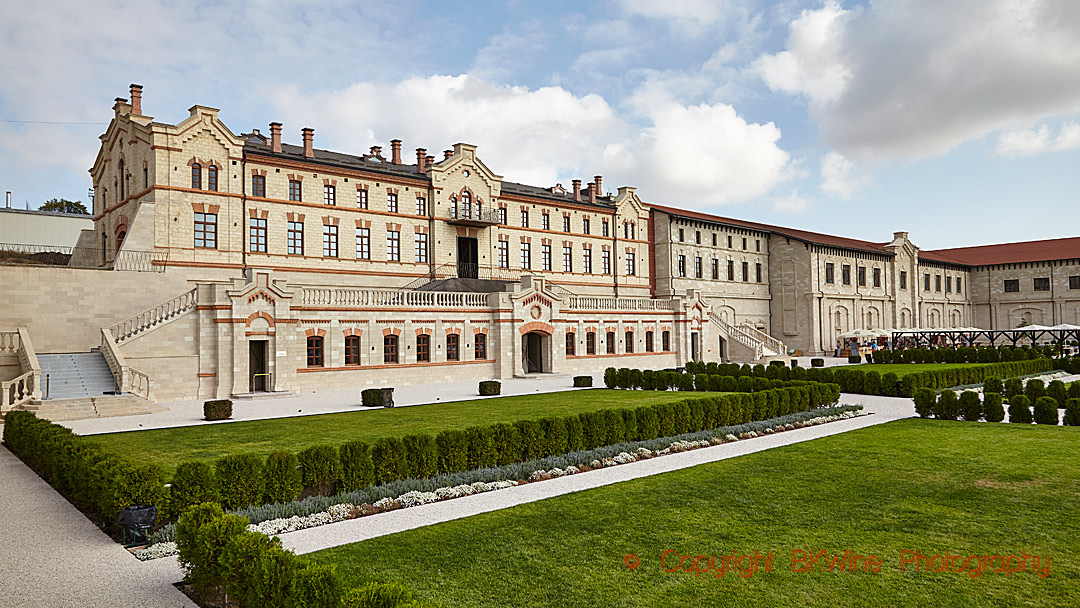
The beautiful chateau and its adjoining production buildings were surrounded by vineyards. With Constantin’s experience from France, he soon became a well-known wine producer, selling his wines all over the Russian Empire. He even had a visit from Nicholas II, the last tsar of Russia. In 1917 Constantin Mimi became the last governor of Bessarabia.
He died in 1935 and shortly afterwards, in 1940, Castel Mimi became state property. “It was turned into an industrial wine factory, one of the biggest in the Soviet Union”, says general manager Cristina Frolov. Her parents bought this spectacular place in 1998. Cristina is actually the third generation at Castel Mimi because her grandparents were agricultural workers here during the Soviet times.
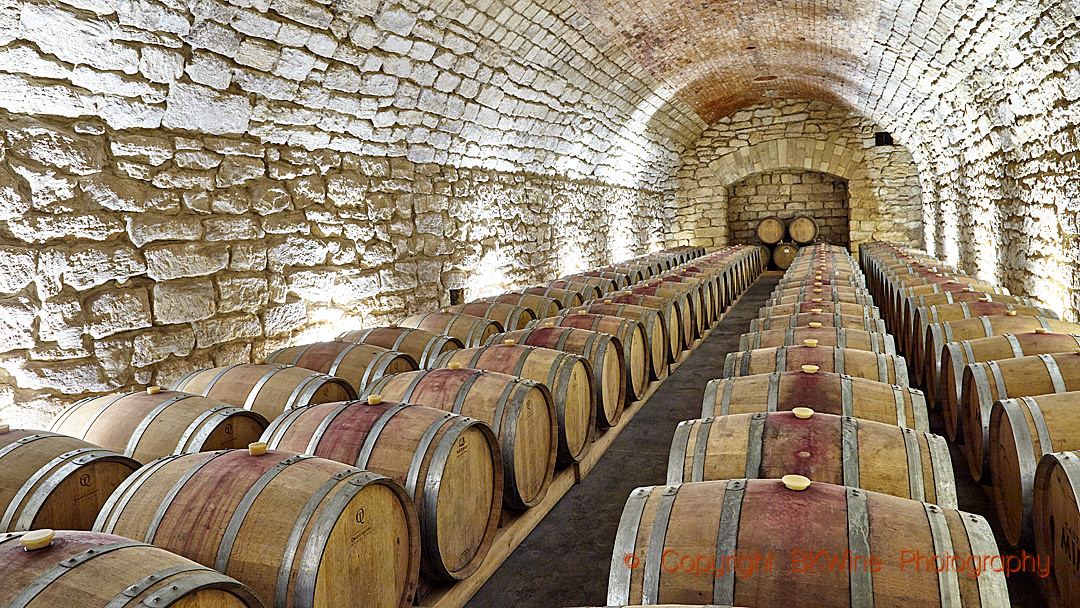
In 1998, though, Mimi was not so spectacular.
“We started to renovate the chateau in 2010. We had 600 builders working here”, says Cristina. “During Soviet times they covered everything in concrete.” The restoration process revealed the beautiful, original stone. “It was hard work”, Cristina admits, “harder than we thought it would be, but in 2016 we opened up for visitors.”
The result is impressive. The whole ensemble, the chateau itself, the cellars, the gardens and the big courtyard, which sometimes is used for concerts, is spectacular.
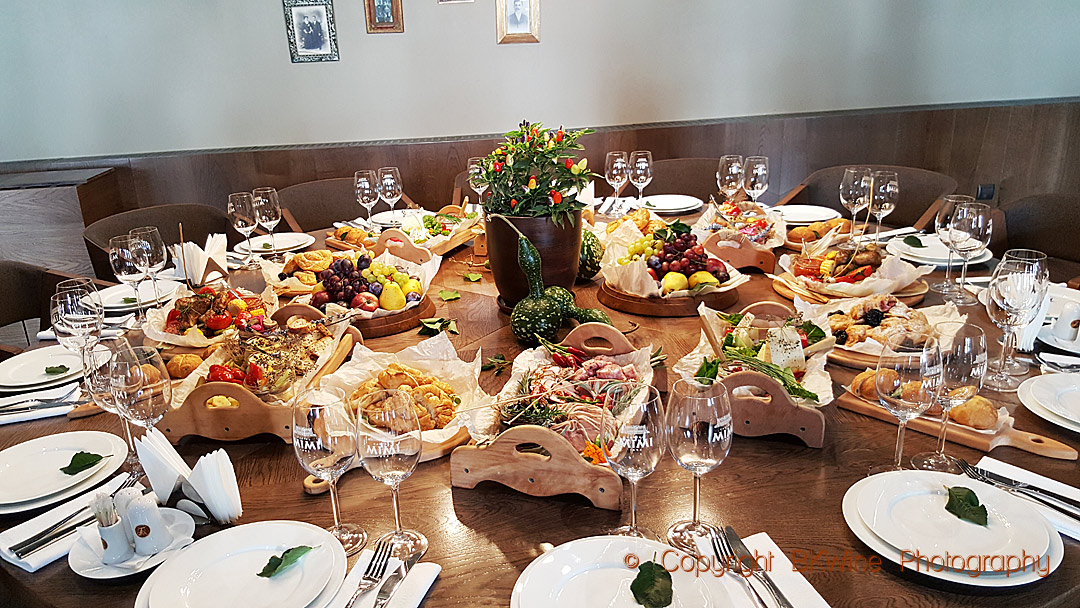
The wine production is at the moment around half a million bottles. 50% is exported to 20 different countries, much of it to Roumania but also to China, Germany and some other countries. They have also started exporting a little bit to Russia again. Cristina and her family have plans to expand in the future. They have capacity in the cellar to produce four million litres.
The range of wines is quite large and you will find both fresh unoaked wines, more structured and oaky wines in the Classic and the Reserve Collection and some interesting ice wines, a Moldovan speciality.
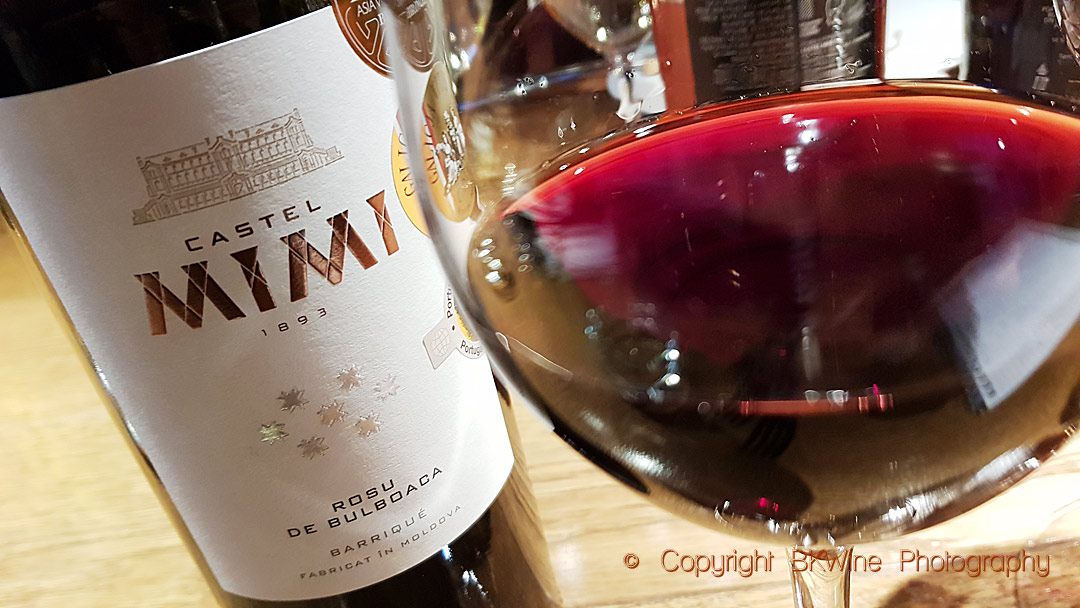
Castel Mimi is not only a wine estate. ”We want Castel Mimi to be a high-level destination, representative of our country”, says Cristina. “We have a bar, a restaurant, top-class accommodation, swimming pool and soon also a wine spa, the first in Moldova”.
Everything is designed for comfort and style. You can relax in the bar with an aromatic sauvignon blanc or a citrusy pinot gris while you wait for your cellar visit to start. Or maybe you are just having an aperitif before lunch.
Don’t hesitate to stay for a while. Seeing the chateau and the gardens lit up at night is really something special.
